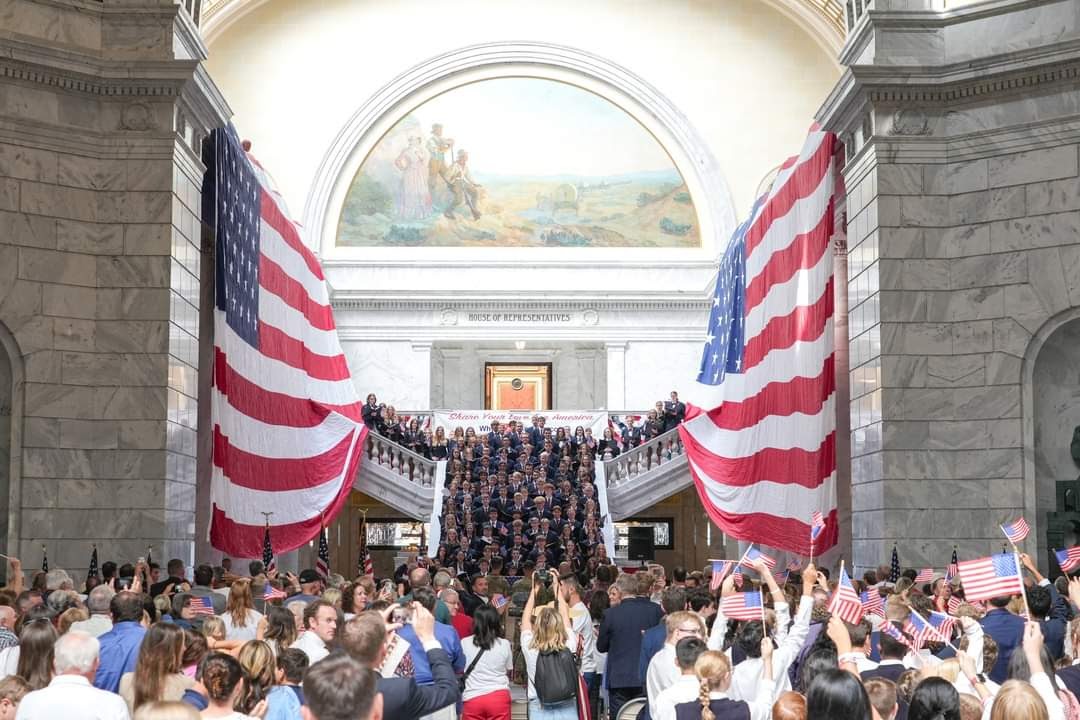Did you know that there are, essentially, three codes for flag protocol that we follow? Let’s take a look.
The Beginning
In 1777, Congress described the flag of the United States and declared that it shall be 13 stripes alternating red and white, with 13 stars on a field of blue. With the passage of this law the flag was established. However, it was controlled largely by the War Department (later the Department of Defense, DoD), since flags were used primarily by the military.
The Military “Code”
Each branch developed their own regulations and protocols that addressed their unique needs.
Members of the United States Uniformed Services are required to follow the regulations for their respective branch and guidance at the DoD level. The regulations are not a buffet from which you can pick and choose which standards you follow. Each branch must stay within their published regulations with very few exceptions. One exception is Joint Military and Joint Armed Forces color guard formations.
Read about these standards in
- Army Training Circular 3-21.5
- Army Regulation 840-10
- Army Regulation 600-60
- Marine Corps Order, 5060.20
- Marine Corps Order 4400.201 Vol 13
- OPNAVINST 10520.1B
- OPNAVINST 1710.7a (contains info from US Navy Regulations Chap 12)
- NTP 13(B)
- Air Force Pamphlet 34-2203
- Air Force Manual 34-1201
- Air Force Pamphlet 34-1202
You can download all of them for free under Military Manuals on the Resources page.
The Civilian Code
When it came to flag use by civilians, there weren’t any clear instructions on how the flag should be displayed or carried. Civilians are NOT required to follow military regulations. An example of this would be folding the flag. Only the military requires the flag to be folded into a triangle. All civilians and even civil personnel (law enforcement, firefighters, etc.) can fold the flag into a rectangle or even roll it up.
What prompted the establishment of flag-related guidelines was the growing popularity of the flag following WWI and its increasing use in various contexts, such as public buildings, schools, and parades. As the flag’s use by civilians became more widespread, there was a need to ensure that it was treated with the proper respect and dignity.

One of the common problems back then was carrying a flag flat in a parade to collect donations for a cause. Money would be tossed into the flag for the organization. The Red Cross did this regularly. In the photo here you can see this. While this is a Red Cross flag, and nothing wrong with that, there is a similar photo of volunteers holding the American flag for the same purpose.
The flag is never carried flat. The Pentagon recently added that to flag guidance for the military.
If you are wondering about fringe on the flag and the cord and tassels, read this.

Similarly, the flag is not to be drawn up or festooned. as is unfortunately shown here by Utah’s Lt Governor in 2023.
In response, the National Flag Conference, held in Washington, D.C., in 1923, played a crucial role in developing a comprehensive set of guidelines for the flag’s use. Participants used the 1917 Army and Navy regulations, along with ideas/traditions from other countries, such as the United Kingdom, France, Germany, and other European nations. The recommendations of this conference formed the basis for the eventual United States Flag Code.
The U.S. Flag Code was officially codified in Title 4 of the United States Code, public law, in 1942. Although it needs expansion, it provides clear instructions on how the flag should be displayed, handled, and honored. The code was intended to instill a sense of reverence for the flag and to establish a common standard for its use across the nation.
The International Code
The United Nations (UN) has agreed upon standards for international flag display. And so does the North Atlantic Treaty Organization (NATO). And the International Olympic Committee (IOC). Some countries require fringe on their flag, others forbid it. All flags in countries that read left-to-right, are draped that way, but not all countries that read right-to-left display their flag that way (most do).
- UN
- UN members first alphabetically in English, then non UN members.
- NATO
- NATO is alphabetically in French.
- IOC
- Alphabetical order, as they appear in the host country language.
Read, Check, Understand, and Apply
When planning events it is important to know which set of rules the event falls under. If you are uncertain, contact your state protocol expert or a vexillologist.
Written with DeVaughn Simper, Resident Vexillologist.

